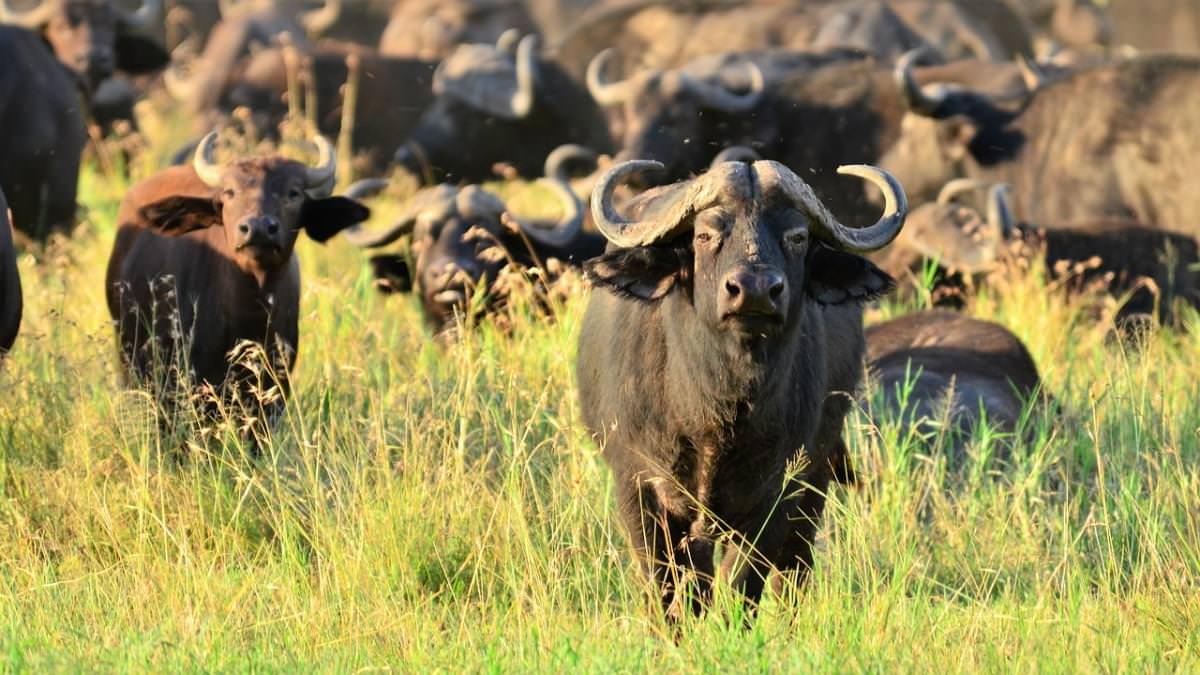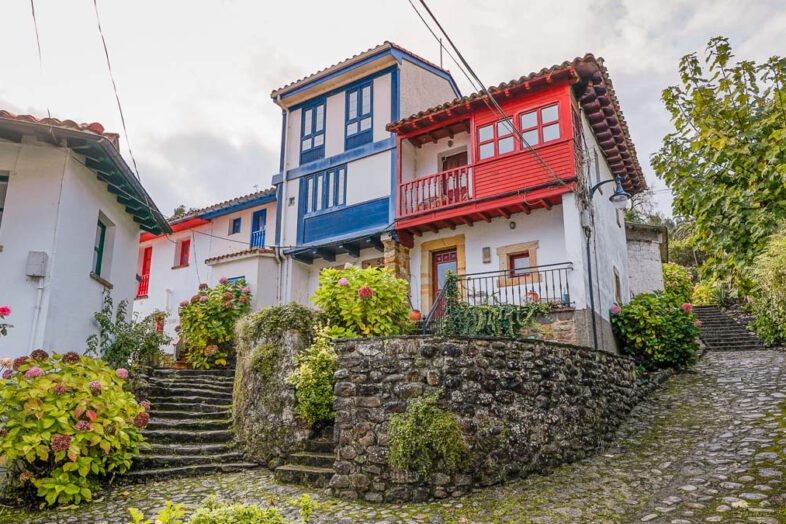
TAZONES: what to see, map and photos (villages of Asturias)
A guide with everything there is to see in Tazones, one of the most beautiful villages in Asturias.
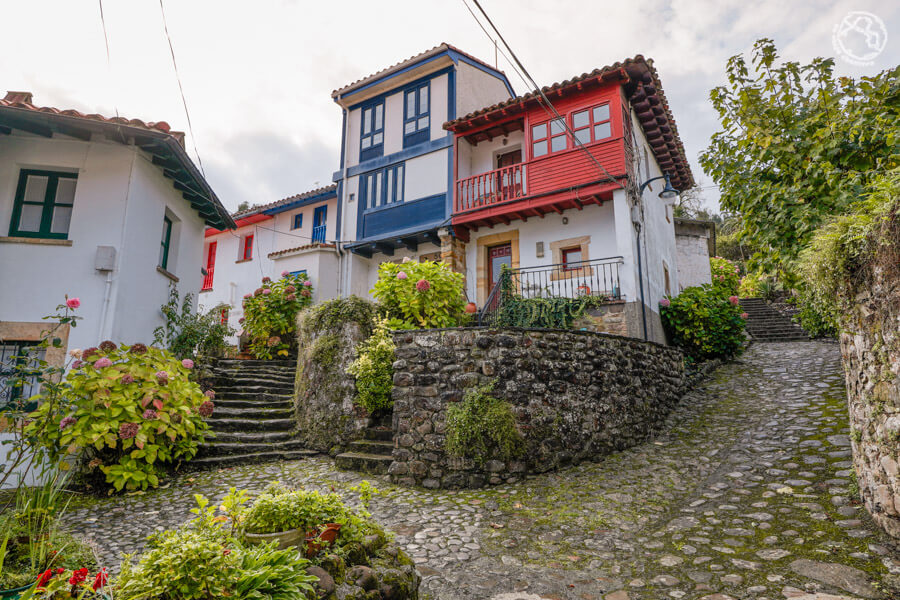
Note: if you are route through Asturias you may be interested in this article about the route along the coast of Asturias from end to end. If you want to visit more areas of the north, this article with the route through the north of Spain.
Things to do in Tazones
Tazones has earned on its own merits to enter the (numerous) lists of most beautiful villages in Asturias and Spain. This small fishing village, considered a historic-artistic site, accompanies other places in the Principality such as Lastres, Cudillero, Luarca or Taramundi (to mention just a few).
Tazones is located in the vicinity of the RIA De Villaviciosa, half an hour by car from Gijón, which makes it an ideal place to visit in a day leaving from this coastal city.
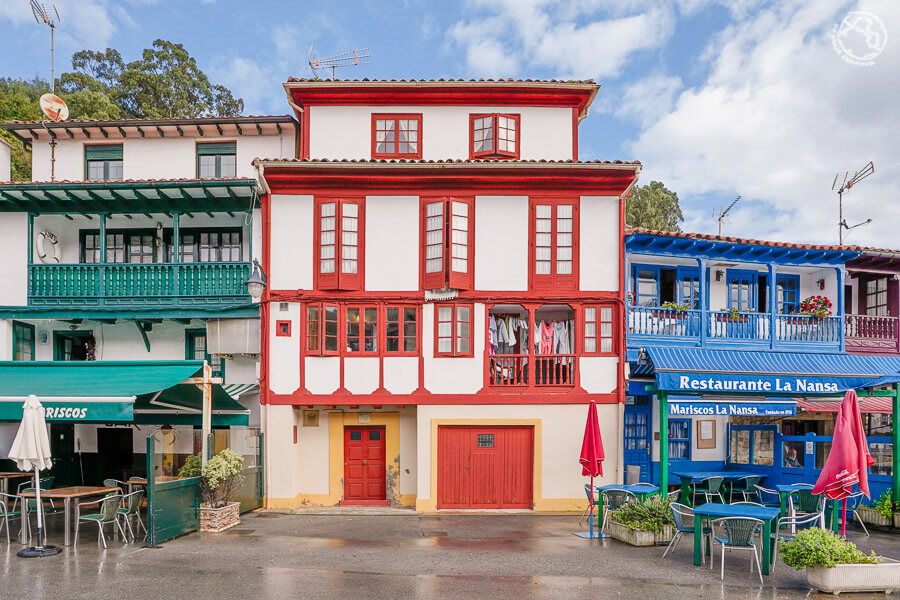
(Hyper-Brief) History of bowls in three snapshots
If we had to define the story of Tazones in three snapshots, these would be the dinosaur tracks, the landing of Charles V and the whaling.
Snapshot # 1: for the first snapshot, we go back more than 150 million years ago. We meet in the Jurassic periodwhere dinosaurs populated the Earth. In Tazones and its surroundings you can find remains of its presence, as in the ichnite deposits located in the Stone located east of tazones Beach.
Snapshot # 2: we take a great leap into the future from the Jurassic to 19 September 1517, when Prince Charles of Habsburg, son of Juana I of Castile (Juana the mad) and Philip The Beautiful, landed in bowls unexpectedly due to poor sea conditions. That was the first time Spain touched the king who would go down in history under the name of Charles I of Spain and V of Germany.
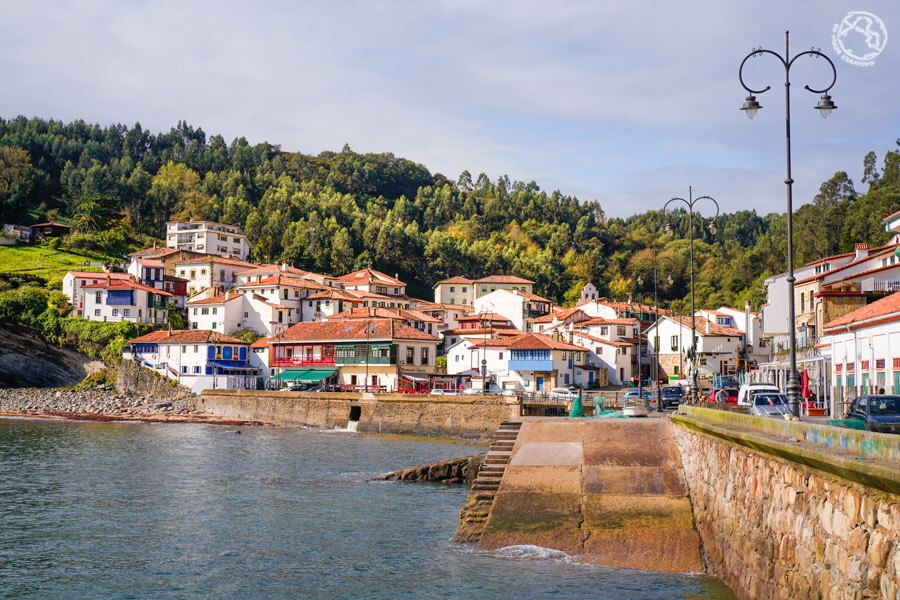
Snapshot # 3: in this last snapshot we remain in the time of Carlos I and appears before our eyes a ship of Asturian fishermen capturing a whale in the Cantabrian Sea. The fishing village of Tazones lived from the capture of cetaceans for several centuries, being especially fruitful the sixteenth and seventeenth centuries.
Things to do in Tazones
Despite its small size, there are plenty of attractions to see in and around Tazones, many of them related to the three snapshots cited above in the (hyper-Brief) History of Tazones.
Ichnite deposit
To the east of Tazones Beach is a site of ichnites (dinosaur footprints) that were fixed on the rock during the Jurassic period. They can be accessed during low tide.
Near Tazones there are other ichnite sites such as the Jurassic site of the Tazones Lighthouse.
Neighborhoods of San Roque and San Miguel: seafaring houses and Casa de las Conchas
The main attraction to see in Tazones it is its urban complex, which is divided into the neighborhoods of San Roque and San Miguel, declared historic-artistic.
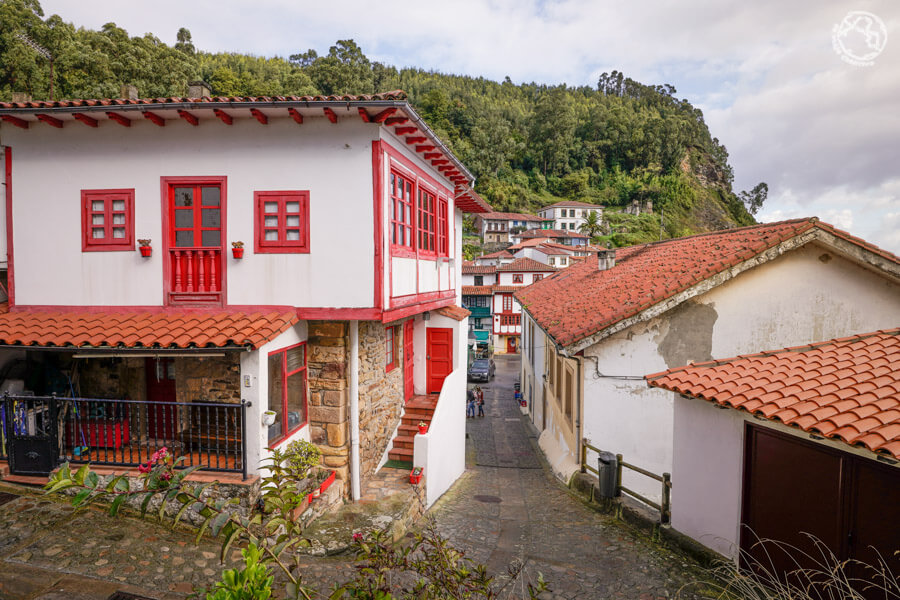
During the walk through the streets of Tazones you can see the typical settlement model in natural ports (very similar to Cudillero) that was developed from the middle of the twelfth century, with the aim of reducing the danger of pirate raids.
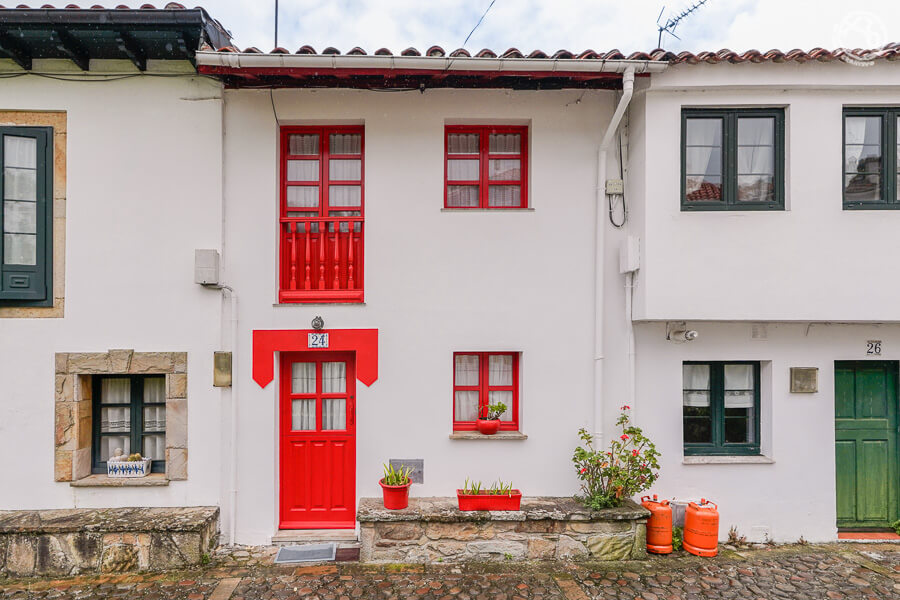
Particularly striking is the popular seaside village, built of wood and provided with great color. Among the seafaring houses of Tazones stands out the so-called House of shells, whose facade is completely covered with shells.
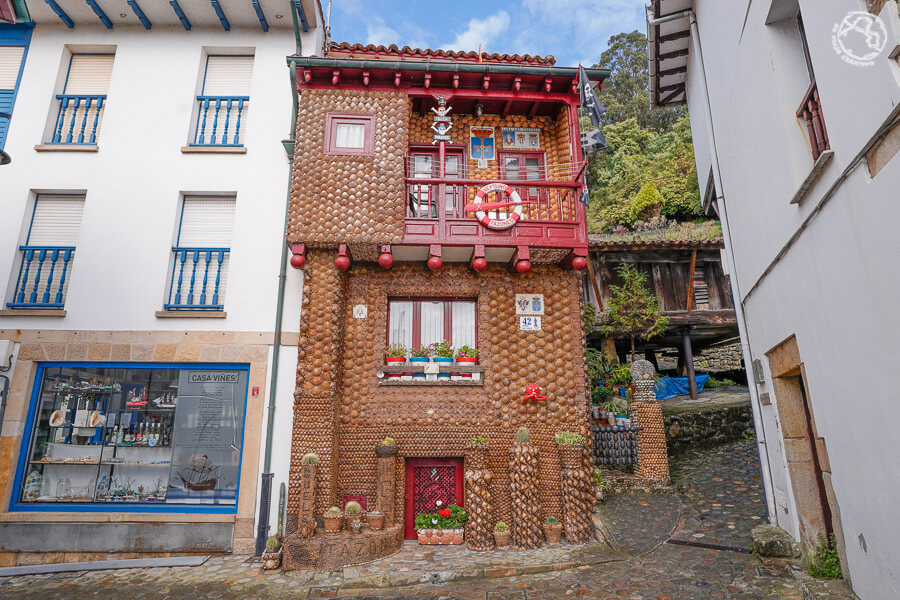
Port of Tazones
The fishing activity of Tazones is reflected in medieval documentation since the twelfth century. In the fifteenth and sixteenth centuries this activity reached its maximum flowering, with the constant flow of European ships entering and leaving products such as whale blubber, flax, wax, pitch…
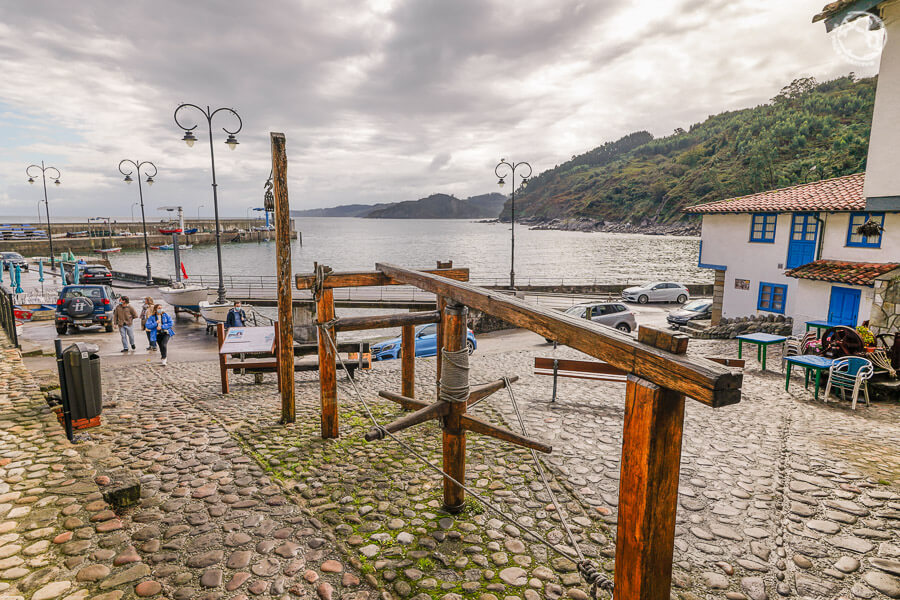
The oldest port area today visible was built at the end of the eighteenth century and is located under the first row of houses, where an old wooden lathe embedded in the pavement that was used to climb boats ashore is preserved.
Route of Carlos V: Camino Real (from Tazones to Villaviciosa)
As I mentioned before in the history (hiperbreve) of Tazones, this port was the first place that Emperor Charles V stepped on before taking possession of the Kingdom of Spain. Due to a storm, his ship had to divert and improvise a landing in this town.
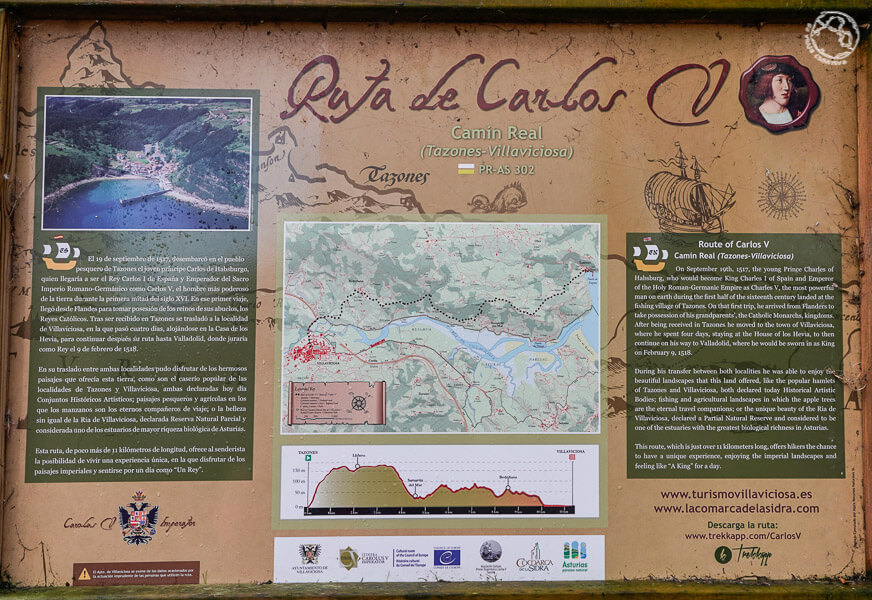
As the story tells, because this town lacked accommodation at the height of such a main character, Prince Charles, along with his sister the infanta Leonor and his entourage were moved to the nearby town of Villaviciosa. This route is known as Camino Real, the route followed by Carlos V on his journey to Madrid.
This historical fact (the arrival of the emperor to Tazones, is commemorated annually during the month of August (around days 22-24) with the feast of the first landing of Charles V, considered a festival of tourist interest in the principality and the main event to see in Tazones.
Tazones Lighthouse
The tazones lighthouse is located in the nearby village of Villar. It was built in 1864 and is one of the best preserved of the Asturian Coast (if you like lighthouses, take a look at this article about Cabo Peñas and its lighthouse).
Accommodations in Tazones and location map
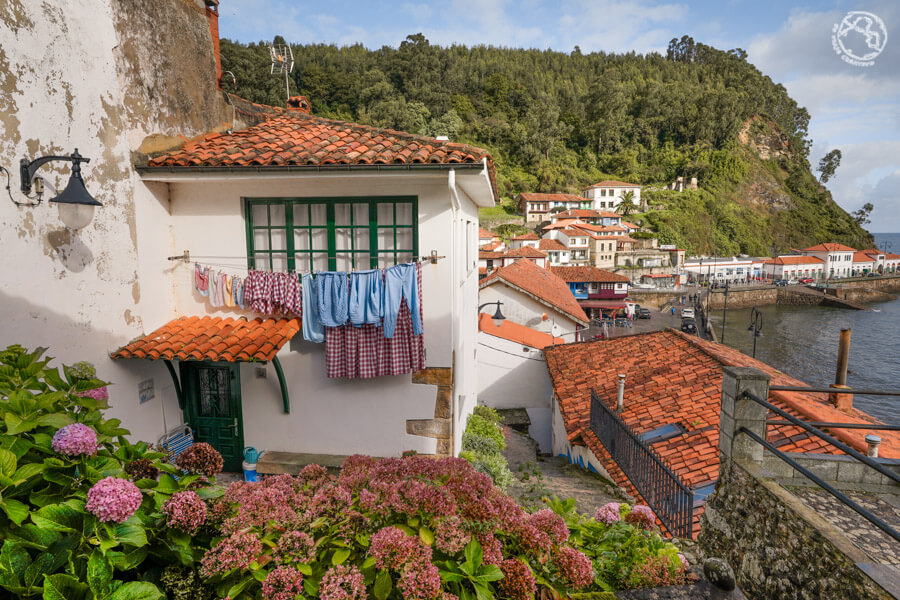
Tazones is located half an hour from Gijón, halfway between this city and the town of Lastres. Because of its small size, accommodation options in Tazones are smaller than elsewhere. To see all accommodation available in Tazones and surroundings you can click on this link or look into the map I put below (sometimes not visible through mobile devices):
Booking.com
More items from Asturias
* Code of ethics: in this article there are links from which I receive a small commission. You should know that your reservations will have the same price and even sometimes you will get a discount(you will never pay more). This way you help me to keep telling you stories on the blog. All the companies I recommend have been tested first hand by me.







